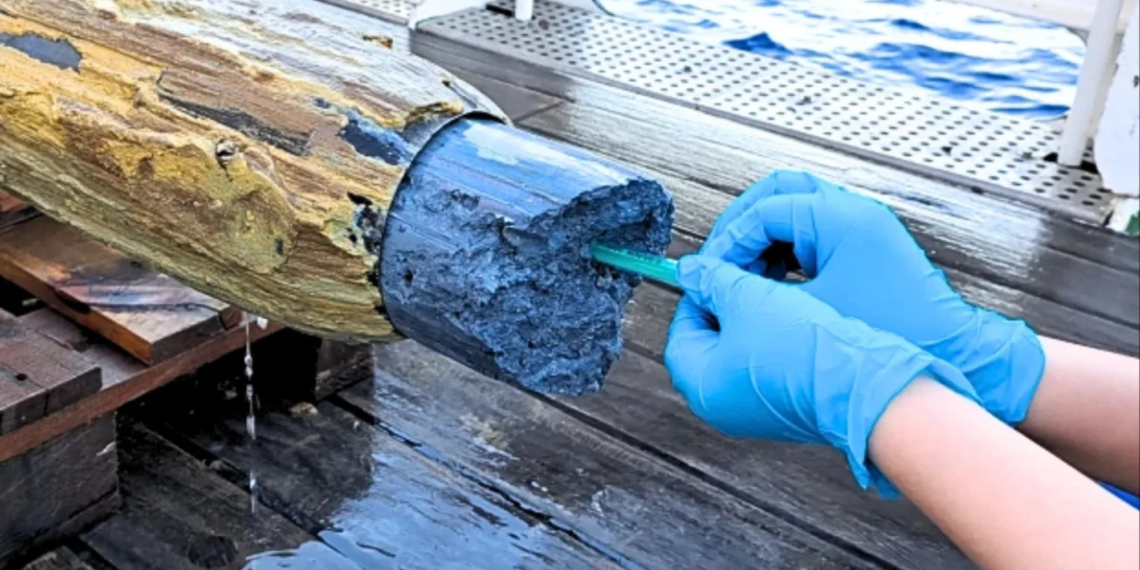Scientists have uncovered a weird, electric-blue volcanic mud that’s toxic to the touch and somehow alive, deep beneath the Pacific Ocean.
The goo comes from mud volcanoes near the Mariana Trench, almost 3,000 meters down, where sunlight dares not reach. It’s an environment so alkaline (pH 12) that it could eat through your skin. But inside it, researchers from the University of Bremen found fats.
As detailed in Communications Earth & Environment, the fats that make up the cell membranes of bacteria and archaea remain largely intact, providing proof that tiny extremophiles are thriving in this caustic slop. The scientists think the microbes feed themselves by consuming sulfate and methane, belching out hydrogen sulfide in a process that sounds gross but could be the key to understanding how life began.
Strange Blue Goo Beneath Pacific Ocean May Reveal Life’s Origins
The samples were collected from the Pacman mud volcano during a 2022 deep-sea expedition. The deeper layers of the core were made of serpentinite and brucite, minerals that give the mud its neon hue. The lower, untouched layers still shimmer blue-green, while the upper parts, closer to seawater, fade as the minerals dissolve.
Geochemist Florence Schubotz and her team believe these mud volcanoes could mirror the conditions of early Earth: hot, chalk full of life-generating chemicals, and hostile, yet somehow fertile. “We suspect that primordial life could have originated at precisely such sites,” she said in a statement published on the University of Bremen website.
Life beneath the seafloor makes up an estimated 15 percent of all biomass on Earth. That’s an entire hidden biosphere pulsing below us that we largely don’t understand. What study author geoscientist Palash Kumawat and his colleagues found tells us that even in the most extreme, seemingly inhospitable chemical pits imaginable, something alive will find a way to call it home.
The post Blue Volcanic Goo Found at the Bottom of the Ocean Is Showing Signs of Life appeared first on VICE.




